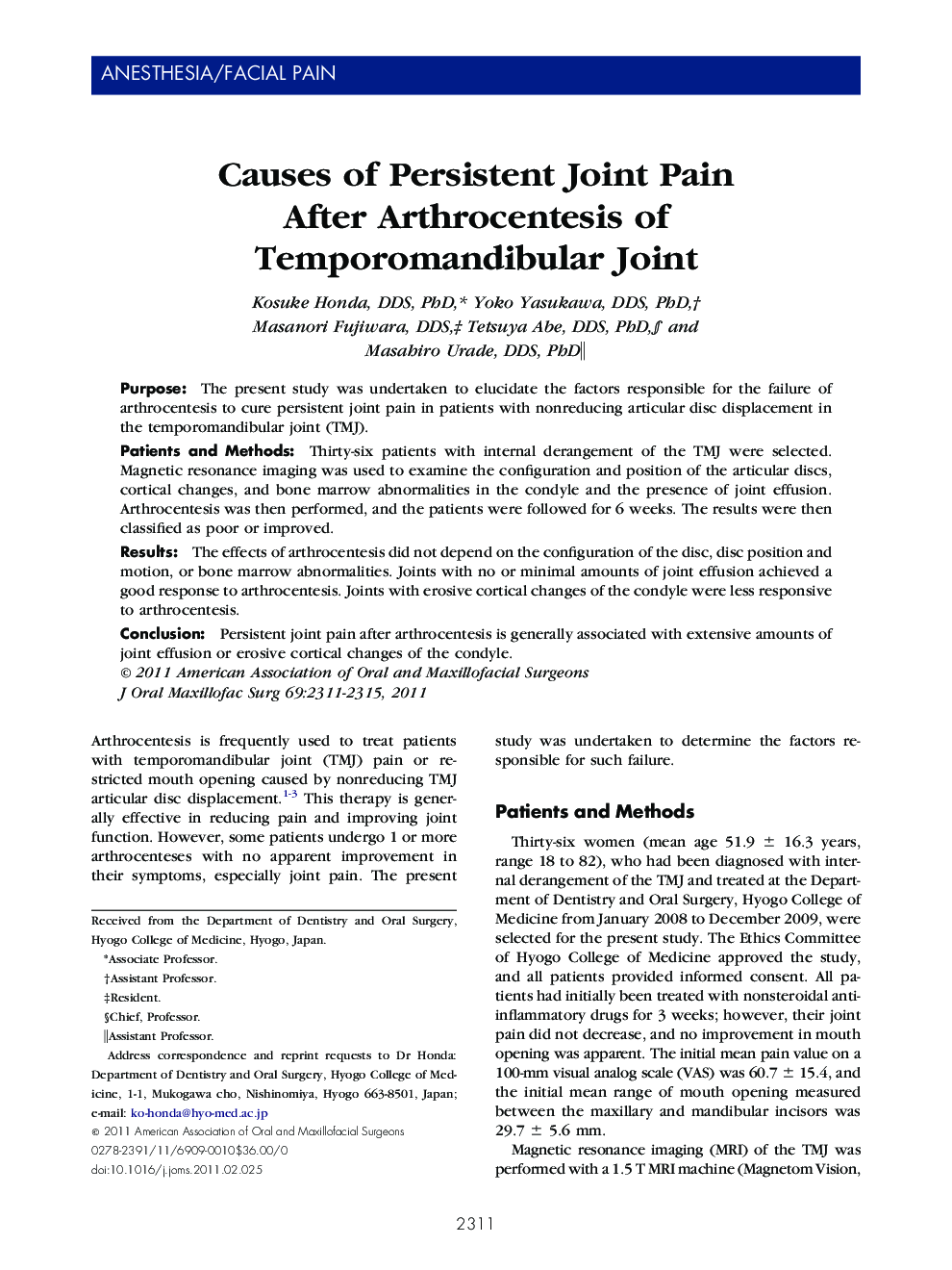| کد مقاله | کد نشریه | سال انتشار | مقاله انگلیسی | نسخه تمام متن |
|---|---|---|---|---|
| 3156857 | 1198144 | 2011 | 5 صفحه PDF | دانلود رایگان |

PurposeThe present study was undertaken to elucidate the factors responsible for the failure of arthrocentesis to cure persistent joint pain in patients with nonreducing articular disc displacement in the temporomandibular joint (TMJ).Patients and MethodsThirty-six patients with internal derangement of the TMJ were selected. Magnetic resonance imaging was used to examine the configuration and position of the articular discs, cortical changes, and bone marrow abnormalities in the condyle and the presence of joint effusion. Arthrocentesis was then performed, and the patients were followed for 6 weeks. The results were then classified as poor or improved.ResultsThe effects of arthrocentesis did not depend on the configuration of the disc, disc position and motion, or bone marrow abnormalities. Joints with no or minimal amounts of joint effusion achieved a good response to arthrocentesis. Joints with erosive cortical changes of the condyle were less responsive to arthrocentesis.ConclusionPersistent joint pain after arthrocentesis is generally associated with extensive amounts of joint effusion or erosive cortical changes of the condyle.
Journal: Journal of Oral and Maxillofacial Surgery - Volume 69, Issue 9, September 2011, Pages 2311–2315